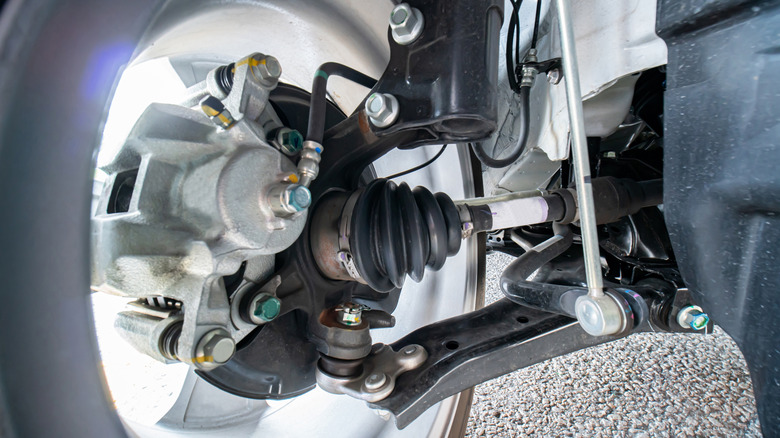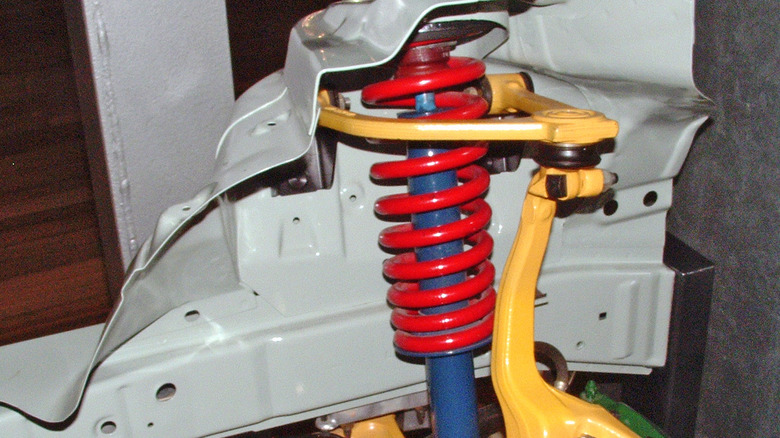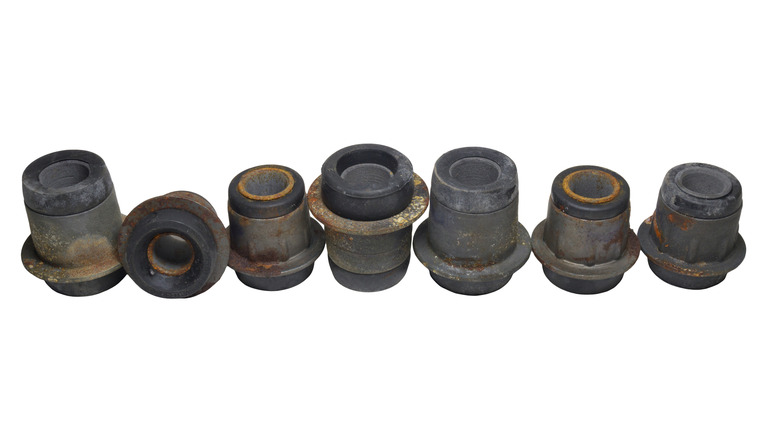What Are Suspension Bushings? (And How To Tell If Yours Are Worn Out)
When people think about the suspension of a car, they might think of the shocks or the tie rods, or even the steering mechanism, but there are smaller parts, too. Bushings are relatively small rubber or polyeutherene rings found where parts connect, and they play a huge role in making sure that your ride is smooth and safe. They help with everything from how the car handles bumps, to the alignment of the wheels, and even how the steering connects to the suspension. The number of bushings depends on the design of the suspension.
Bushings wear out over time. Factory original bushings are often made of rubber, which can dry out or be eaten away by chemicals that splash onto it. They rarely fail suddenly, so unlike a blowout on a tire, bushing wear and tear does not create a sudden emergency. If you suspect that there is a problem, but it isn't affecting the car's performance, you have time to have them inspected.
Worn or damaged bushings affect a car differently depending on where they are. Sometimes, you can learn about the condition of the bushings while driving. Some are not so obvious, though, and you need to examine them.
Bad bushings will affect your driving experience
Suspension bushings on the front of a car keep the wheels pointed in the right direction, make sure the car reacts when you turn the steering wheel, and prevent the car from overreacting when you hit a bump or make sudden moves. Worn bushings can play havoc on the driving experience, and they might indicate that your vehicle needs new suspension.
If you hear squeaks or clunks when you hit bumps, you might have worn out struts or shocks, but it could also be the bushings that help to connect them to the car. Other noises to watch for are clicks when you make a hard turn, as those indicate a problem with the tie rods, which sometimes have bushings going to the steering knuckle that connects the wheel to the steering and suspension.
Less noisy but equally obvious are anti-roll bar issues, as there might be a squeak or click but the car will definitely lean more than it used to when taking sharper turns or going over bumps affecting one side of the car.
Test your bushings while parked
Some suspension bushings will wear out without much notice. You might think that the car is sagging a little in the back when you look at it, you might have bad shocks, but if you push down on the bumper and it feels like the shocks are damping the push, it could be the bushings.
In the front, to determine whether control arms or anti-roll bar bushings are causing a click, you could push on the car up and down and sideways, obviously while parked. Having someone push the car while you lie under it to listen for clicks might make it easier to locate the source of the noise.
Once you have determined that there is a problem with the car and that it's likely a suspension bushing, it's high time to work on it or get the car to a shop. Unlike steering bushings that can affect a car's ability to turn in response to your turning the steering wheel, it is not an urgent issue, but it should still be a high priority. Checking for noises and changes in performance are just some simple tricks that will maintain your car's suspension.


